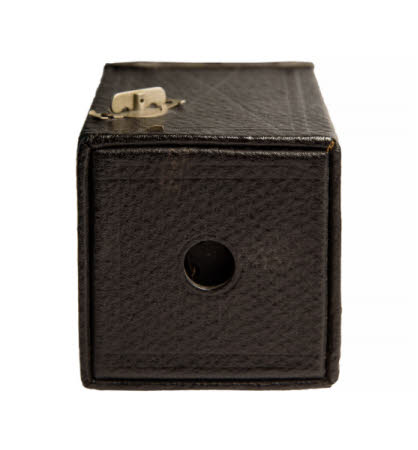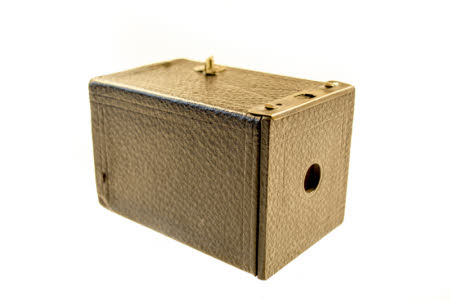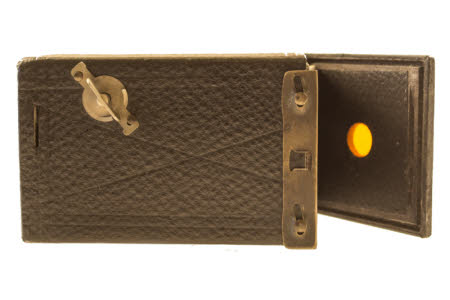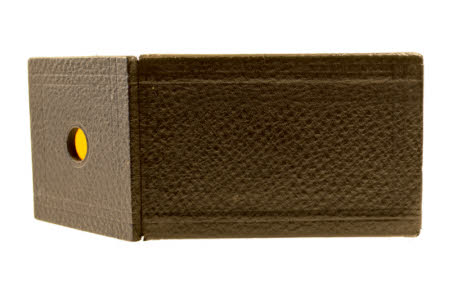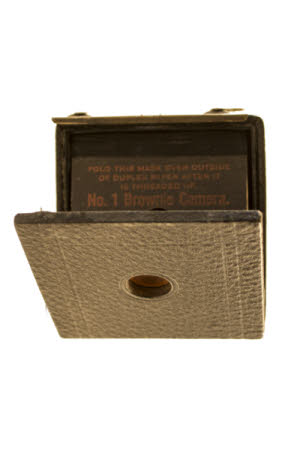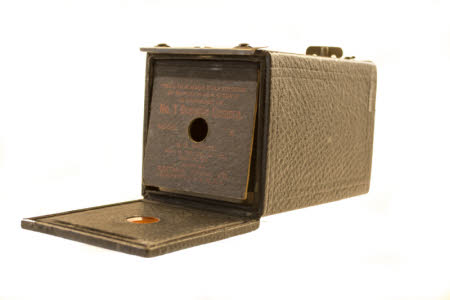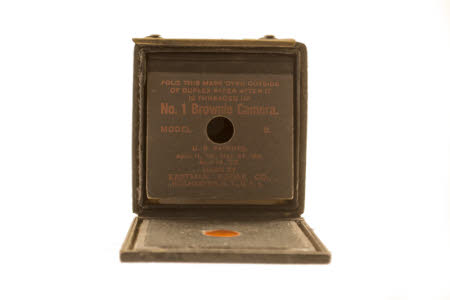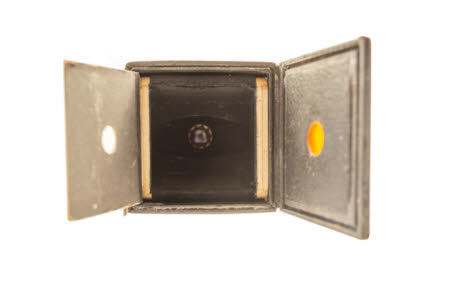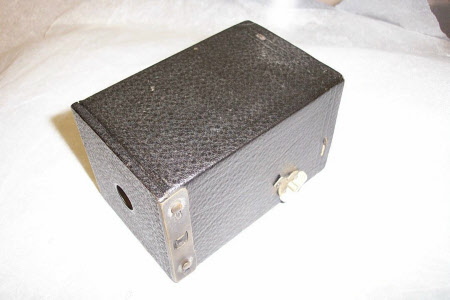Camera
Category
Photographic technology
Date
Unknown
Materials
Cardboard, Metal & Glass
Measurements
125 x 80 x 80 mm
Order this imageCollection
Mr Straw's House, Nottinghamshire
NT 742602
Caption
The Brownie camera, introduced in February 1900, invented low-cost photography by introducing the concept of the snapshot to the masses. The Brownie was a very basic cardboard box camera with a simple meniscus lens that took 2 1/4-inch square pictures on 117 roll film. The Brownie camera was conceived and marketed for sales of Kodak roll films. Because of its simple controls and initial price of $1 along with the low price of Kodak roll film and processing, The Brownie camera achieved and surpassed its marketing goal. The first model of the camera was invented by Frank A. Brownell. The name comes from the brownies in popular Palmer Cox cartoons. Consumers responded, and over 150,000 Brownie cameras were shipped in the first year of production. An improved model, called No. 2 Brownie came in 1901, which produced larger 2-1/4 by 3-1/4 inch photos and cost $2. It was also very popular. In 1908, the Austrian architectural critic Joseph August Lux wrote a book called Künstlerische Kodakgeheimnisse (Artistic Secrets of the Kodak) in which he championed the use of the camera for its cultural potential. Guided by a position that was influenced by the Catholic critique of modernity, he argued that the accessibility the camera provided for the amateur meant that people could photograph and document their surroundings and thus produce a type of stability in the ebb and flow of the modern world. Brownies were extensively marketed to children, with Kodak using them to popularise photography. They were also taken to war by soldiers. As they were so ubiquitous, many iconic shots were taken on brownies. The cameras continued to be popular, and spawned many varieties, such as a Boy Scout edition in the 1930s. Improvements continued, such as in 1940, when Kodak released the Six-20 Flash Brownie. The camera was Kodak's first internally synchronized flash camera, using General electric bulbs. Then in 1957, Kodak produced the Brownie Starflash, Kodak's first camera with a built in flash.
Summary
Box brownie camera with black leather effect cardboard outer casing. On the inside flap printed in red; FOLD THIS MASK OVER OUTSIDE OF DUPLEX PAPAER AFTER IT IS THREADED UP. No.1 Brownie Camera. MODEL B. U.S. PATENTS: April 11, '99; Nov. 27, '00; April 14, '03. MADE BY EASTMAN KODAK CO., ROCHESTER, N.Y. U.S.A.'
Provenance
Straw collection bequeathed to The National Trust on the death in 1990 of William Straw.
Marks and inscriptions
Inside flap: FOLD THIS MASK OVER OUTSIDE OF DUPLEX PAPAER AFTER IT IS THREADED UP. No.1 Brownie Camera. MODEL B. U.S. PATENTS: April 11, '99; Nov. 27, '00; April 14, '03. MADE BY EASTMAN KODAK CO., ROCHESTER, N.Y. U.S.A.
